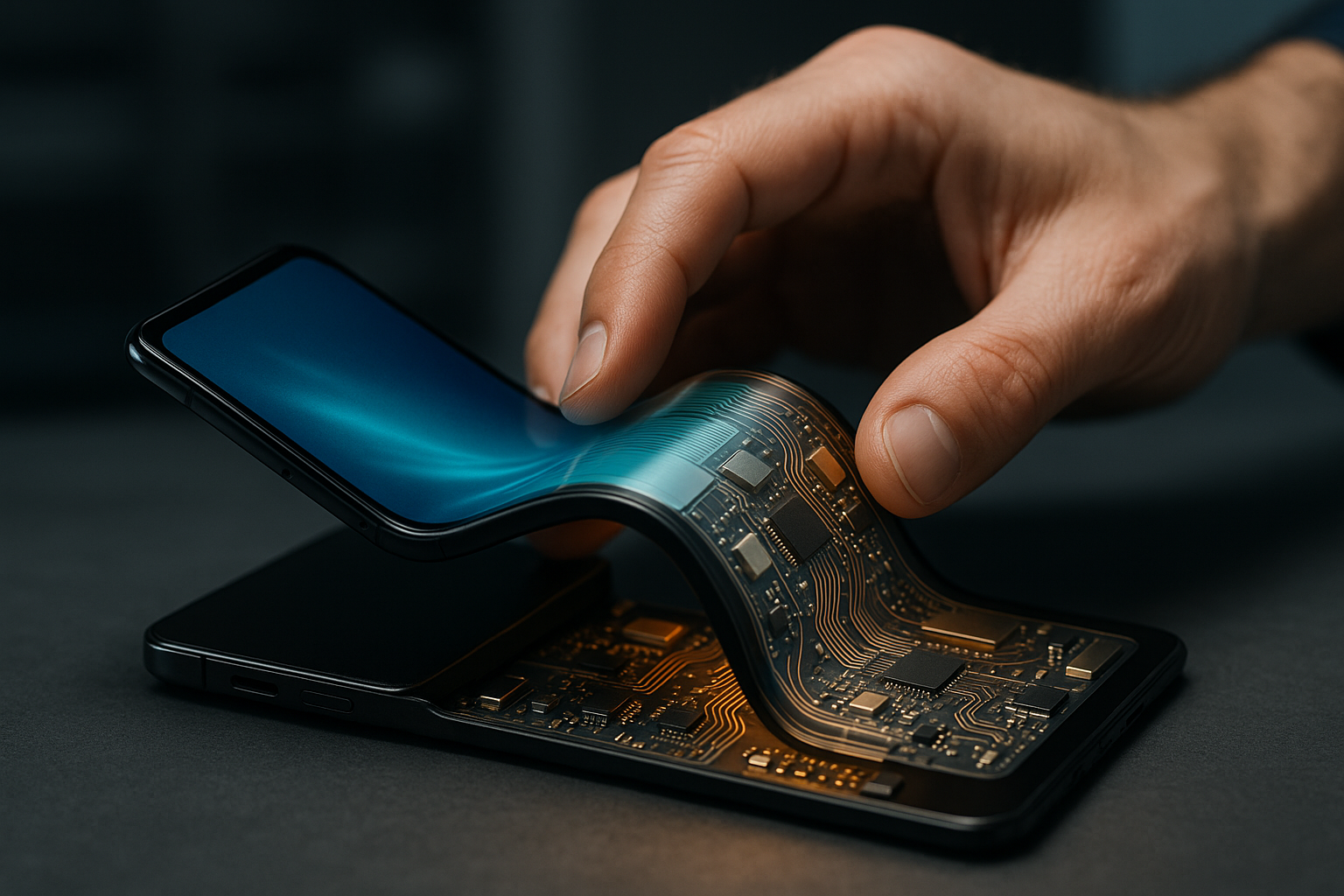"Unfolding the Mystery: The Advent of Flexible Electronics"
In the tech world, evolution is the only constant. One such evolution that is quietly yet significantly transforming the industry is the emergence of flexible electronics. This article takes us behind the scenes of this unfolding revolution, tracing back to its roots, exploring its present implications, and projecting its future trajectory in the tech ecosystem.

The Genesis of Flexibility
The concept of flexible electronics, as we understand it today, was essentially born out of a desire to break free from the rigidity imposed by traditional electronic devices. Traditional electronics, with their rigid circuit boards and brittle components, imposed limitations on design possibilities and user experiences, spurring researchers and innovators to seek alternatives.
By the mid-1980s, scientists had begun experimenting with novel materials and manufacturing techniques, such as organic conductors and thin-film transistors, to enable the fabrication of flexible electronic circuits. However, it wasn’t until the early 2000s that significant breakthroughs started to occur, paving the way for the flexible electronics we see today.
Flexible Electronics in Today’s World
Fast forward to the present, and flexible electronics have started to permeate various aspects of our daily lives. From the curved screens on our smartphones and televisions to the flexible solar panels on our rooftops, the influence of flexible electronics is increasingly evident.
One of the most significant recent developments in this realm is the launch of foldable smartphones by tech giants like Samsung and Huawei. These cutting-edge devices, with their bendable screens, push the boundaries of traditional smartphone design and hint at a future where electronics can be folded, rolled, or even stretched according to our needs.
The Price Tag and Market Impact
Of course, such innovation doesn’t come cheap. The first generation of foldable smartphones was priced significantly higher than their rigid counterparts, with Samsung’s Galaxy Fold retailing at nearly $2,000 at launch. However, as with most new technologies, prices are expected to reduce over time as manufacturing processes improve and economies of scale kick in.
The market impact of flexible electronics is expected to be substantial. According to a recent report by MarketsandMarkets, the global market for flexible electronics is projected to grow from $31.9 billion in 2020 to $48.5 billion by 2025, with applications spanning across consumer electronics, healthcare, automotive, and more.
A Look into the Future
As we look ahead, it’s clear that the story of flexible electronics is far from over. On the horizon are innovations such as flexible wearable devices that can seamlessly integrate with our bodies, bendable batteries that can power these devices, and even flexible electronic skins that can give robots a sense of touch.
However, as with any emerging technology, several challenges need to be overcome. These include improving the durability of flexible components, reducing manufacturing costs, and ensuring that flexible devices can meet the same performance standards as their rigid counterparts.
Concluding Thoughts
The journey of flexible electronics, from a nascent idea to a burgeoning industry, is a testament to the relentless pursuit of innovation in the tech world. As we continue to explore the possibilities that this technology offers, one thing is clear: the future of electronics is anything but rigid.






